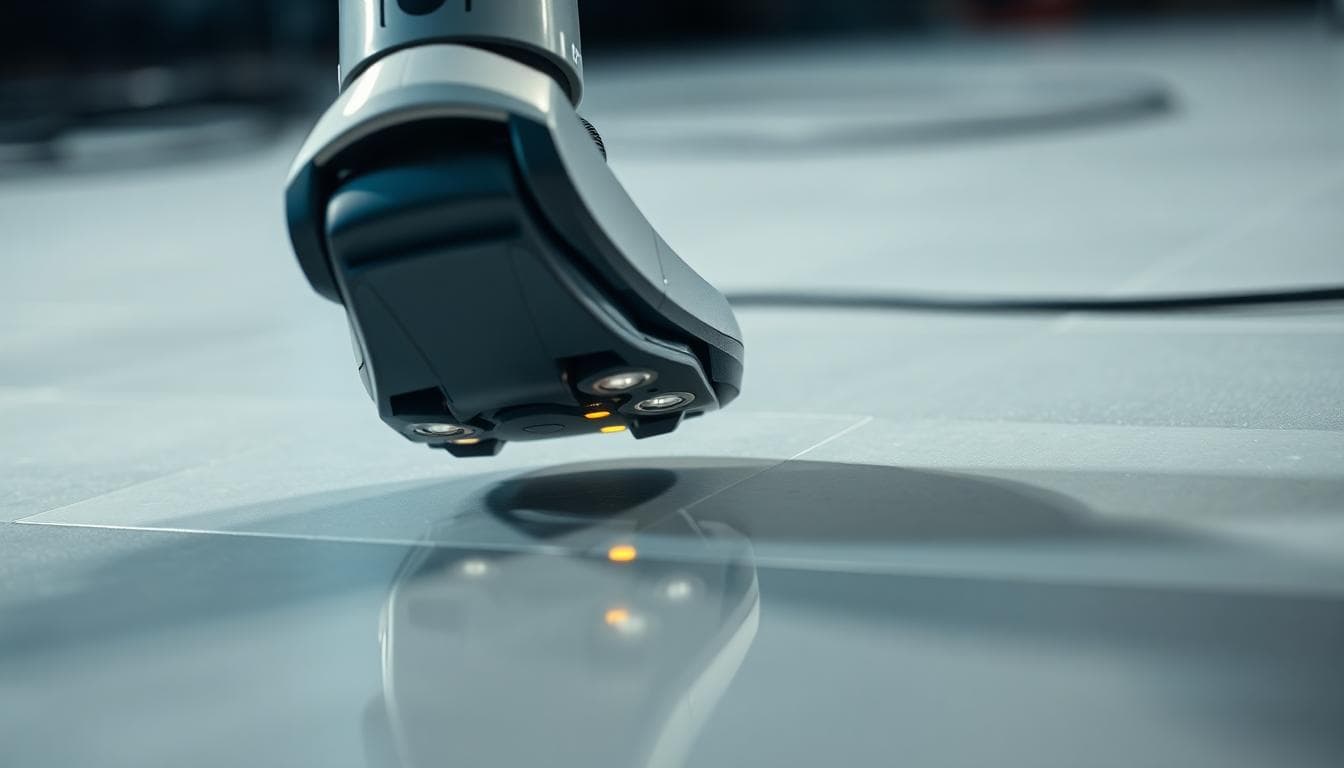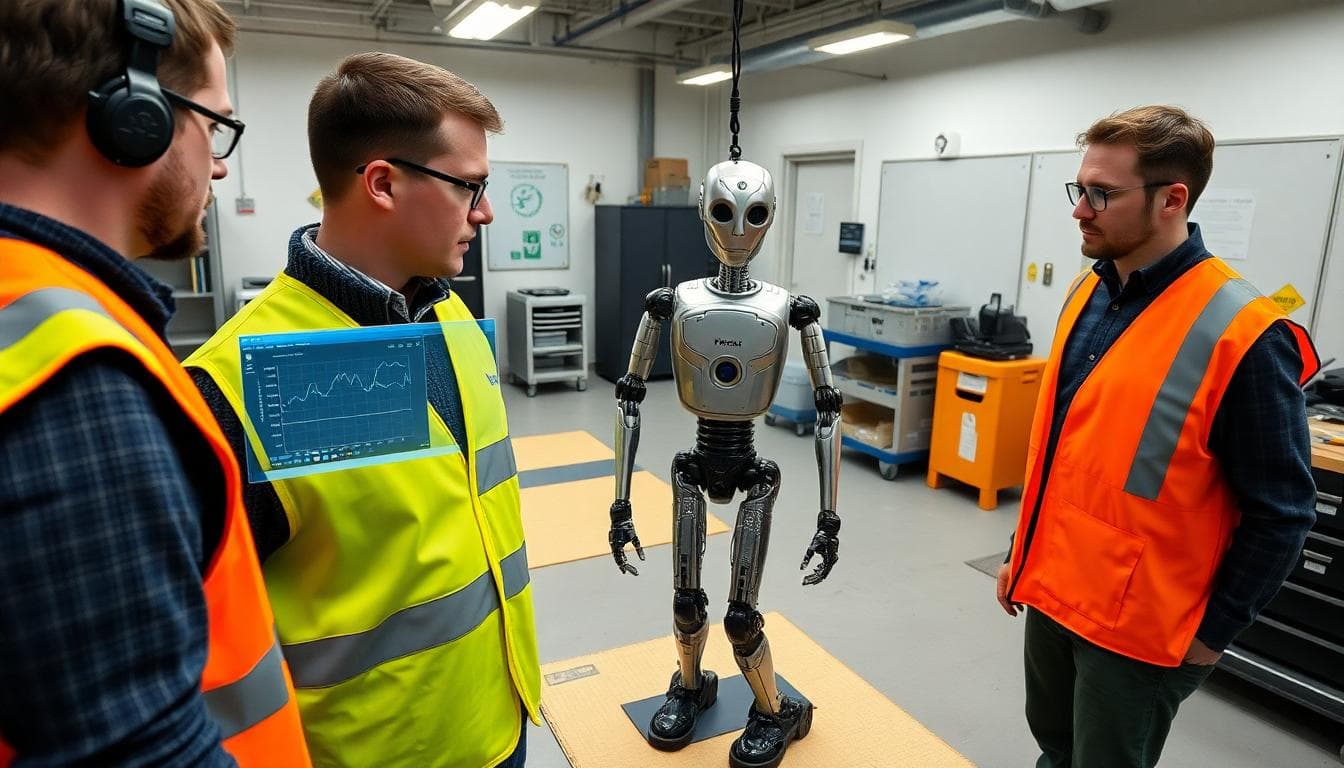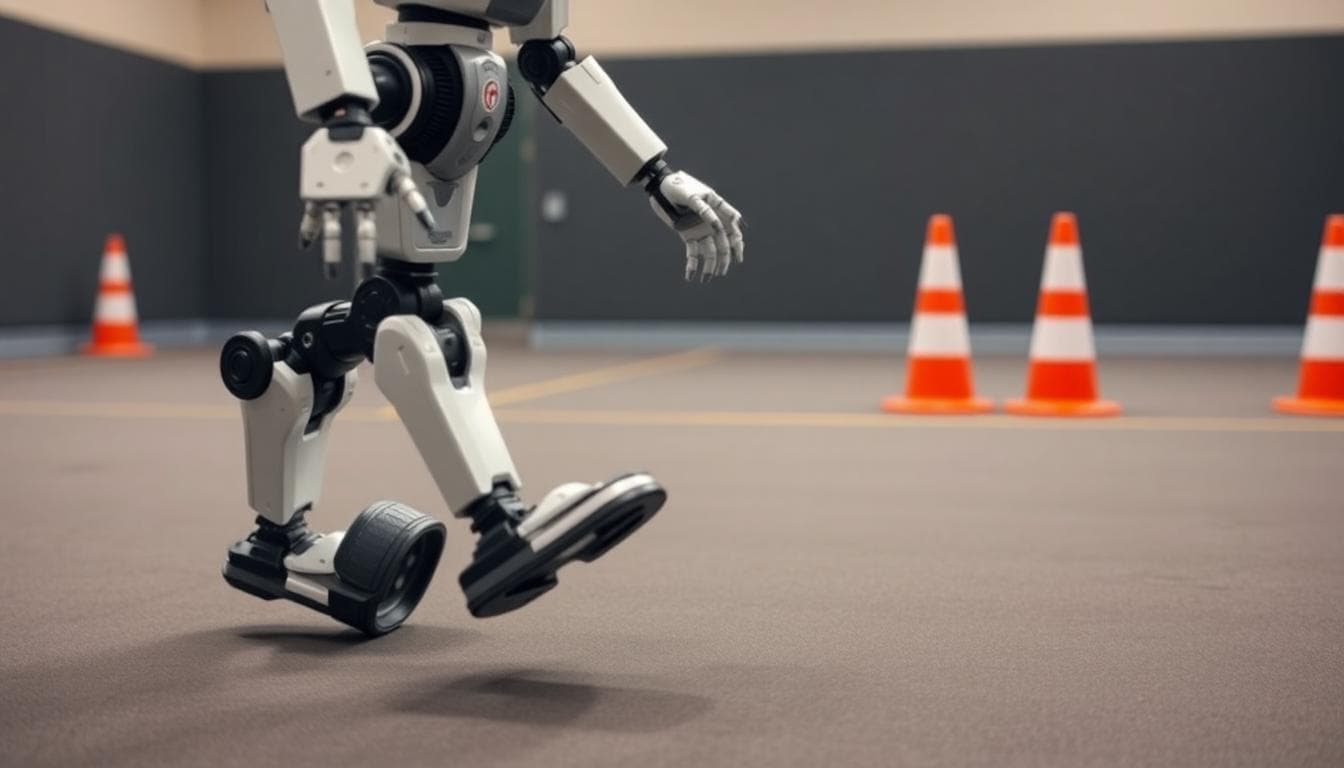At a splashy launch event, a Russian humanoid robot took the stage, waved to the crowd, then lost balance and fell. Clips spread fast online. Some laughed. Others said the fall proves humanoid robots are not ready. The truth sits in the middle. Robots are improving fast, but public demos can be messy. Today, we break down what likely happened, why it matters, and how to think about the real progress behind the memes.
What happened on stage
Live demos are hard. A smooth walk on a clean floor is one thing. A bright stage, slick surfaces, cables, and loud applause are another. A small misstep can cause a big tumble. If the robot relies on vision and force sensors, harsh lights and glare can confuse it. If it balances using foot pressure sensors, even a thin cable or uneven seam can throw it off. Add a tight timeline and the pressure of a live stream, and you see why falls happen.
Humans fall too. Athletes trip. Dancers slip. We forgive people. With robots, we rush to judge. But a fall in a demo does not erase years of steady progress in control systems, battery tech, and actuators.

Why humanoid robots are tricky
- Balance is dynamic: Walking is controlled falling. A robot must shift weight, predict foot contact, and react in milliseconds.
- Surfaces vary: Carpets, cables, and glossy floors demand different traction and gaits.
- Battery and heat: Powerful motors draw heavy current. Heat throttling can reduce torque at the worst time.
- Perception noise: Stage lights and reflections can degrade camera depth and LiDAR readings.
- Software timing: Small delays in control loops can cause oscillation and wobble.
Teams can reduce these risks with better feet, wider stance options, faster control loops, and predictive models. Many labs now blend model-based control with machine learning so the robot adapts as conditions change.
What the fall does not mean
The internet loves to say “robots are dumb.” That misses the point. A fall does not mean the project is a failure. It does not mean the robot cannot do useful work. It does not mean other robots are no better. It means a complex demo faced complex conditions, and one weak link showed up in public.
Think of this like a product recall. It is a feedback moment. Engineers will comb logs, replay the sequence, and fix the bug or hardware gap. Public mistakes can speed up learning, because they reveal the exact boundary where systems break.

Where humanoid robots are already useful
Even if walking on stage is risky, humanoids are edging into real tasks:
- Warehouse totes and pallets: Repetitive lifts with known weights and paths.
- Quality checks: Vision systems scan for defects while arms move parts.
- Simple line work: Button presses, handle turns, and fixture moves.
- Teleoperation: Human operators guide robots in unsafe zones.
These settings are controlled. Floors are marked. Obstacles are mapped. The robot can practice the same steps many times. That is different from a noisy launch stage designed for drama, not stability.
The PR problem: hype vs. reality
Hype sells. It also backfires. When a glossy promo sets sky-high expectations, any slip becomes proof of failure. A better path is honest demos with clear guardrails. Show what the robot can do today, with limits stated upfront. Share metrics that matter: steps without fall, mean time between faults, recovery speed after a shove, and energy use per task.
Clear metrics help buyers, partners, and the public track progress. They also force teams to focus on reliability, not only on cool gestures.

How teams reduce falls
- Better feet: Grippy soles, curved edges, and passive ankles help with ground contact.
- Faster loops: High-rate control (500 Hz or more) catches wobbles early.
- State estimation: Sensor fusion blends IMU, encoders, and cameras for stable posture.
- Fallback gaits: If slip is detected, switch to shorter steps and wider stance.
- Tethers during tuning: Use safety rigs until fall detection is proven.
On stage, smart teams rehearse on the exact surface, lay cable covers, use matte finishes, and keep a safe perimeter. If a fall happens, the robot should detect impact, relax motors, and protect joints.
What this moment signals for 2025 and beyond
We are moving from research to pilots. Expect more public glitches, not fewer, as robots leave labs and meet messy spaces. That is normal. Cars stalled in the early days too. Over the next 12 to 24 months, look for proof points:
- Consistent pick and place in real warehouses.
- Fewer operator interventions per hour.
- Clear cost per task compared to human labor.
- Better batteries and lighter frames for longer shifts.
Humanoids might not replace people. They will likely fill gaps in hard, dull, or risky jobs. Think night shifts, high shelves, and hazardous cleanups. As reliability goes up, their value goes up.
How to watch viral robot clips with a critical eye
- Check the context: Lab test, staged event, or real job site?
- Look for safety: Tethers, spotters, and clear shutdowns are good signs.
- Listen for metrics: Are there real numbers or only buzzwords?
- Compare over time: Did the same robot improve in newer clips?
Use these questions to filter the noise. You will see a clearer picture of progress and risk.
A fall in a high-profile debut makes headlines. It also masks the steady grind of robotics work. Balance, perception, and power systems are getting better each quarter. The next demo may still wobble, but the long-term trend is clear. Humanoid robots are moving from hype to hard-won utility. The smart takeaway is not “robots can’t walk.” It is “reliability is the product,” and that is exactly where teams are focused.
To contact us click Here .

